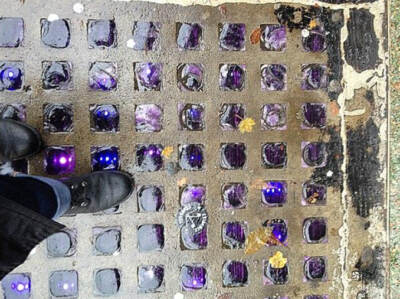Vault lights, also known as sidewalk prisms or pavement lights, are small glass lenses that are set into the pavement or sidewalk to allow light to filter through to underground spaces. These glass lenses are most commonly found in urban areas, and they have a long and fascinating history that spans several centuries.
Dark Underground Spaces: An Old Problem
The use of glass lenses to allow natural light into underground spaces is not a new concept. In fact, the Romans used similar lenses to light their underground cisterns and tunnels as early as the 1st century AD. However, the modern use of vault lights began in the 19th century, during the height of the Industrial Revolution.

During this time, many cities were rapidly expanding, and new buildings were being constructed at a breakneck pace. As a result, there was a growing need for underground storage spaces, particularly in urban areas where land was at a premium. These underground spaces were used for everything from cold storage for food and perishable goods to storage for coal and other fuels.
The problem with these underground spaces was that they were dark, damp, and often prone to flooding. This made it difficult to work in these spaces, and it also made it difficult to find items that had been stored there. In order to address these issues, architects and builders began to experiment with different ways to bring natural light into these underground spaces.
Developing a Transparent Solution
One solution was to install skylights or windows in the roofs of these spaces, but this was not always practical, especially in areas with heavy foot traffic or where buildings were tightly packed together. Another solution was to install gas lamps or electric lights, but this was often expensive and required a significant amount of infrastructure.
The solution that emerged was to install glass lenses into the pavement above the underground spaces. These lenses were made from thick, durable glass that was strong enough to withstand the weight of pedestrians and vehicles passing over them. They were set into the pavement in a grid pattern, and they allowed natural light to filter down into the underground spaces below.
The first vault lights were installed in London in the mid-19th century, and they quickly spread to other cities around the world. In the United States, they were particularly popular in cities like New York and Chicago, where underground spaces were used for everything from storage to transportation. By the early 20th century, vault lights had become a ubiquitous feature of urban landscapes.
Contemporary Vault Lights
Today, many of the original vault lights have been replaced with modern materials like concrete or plastic, but some remain in cities around the world. In some cases, they have been repurposed as design elements or art installations, and they continue to be a fascinating reminder of the ingenuity and innovation of past generations.

In conclusion, vault lights are a testament to the creativity and problem-solving abilities of architects, builders, and engineers from the past. While they may no longer be as prevalent as they once were, they remain an important part of the urban landscape, and they serve as a reminder of the rich history of cities around the world.
For expertise in the vault light industry, contact Circle Redmont today! 800-358-3888.

